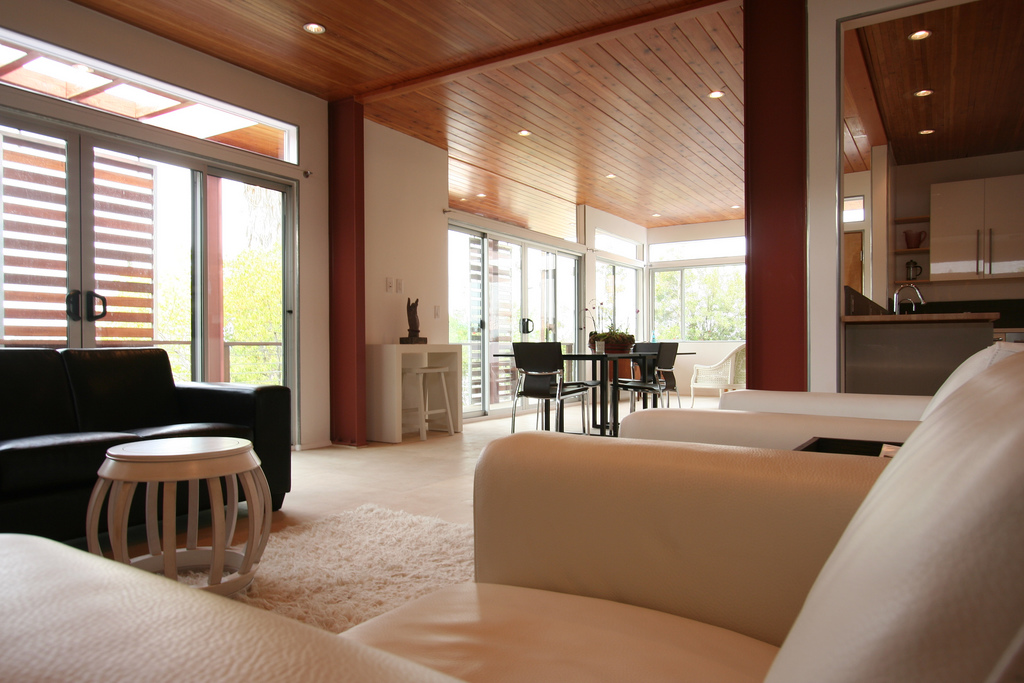
In order to build a healthy future for us and our homes, we need to rely on the sustainable approach and keep the environment safe. However, it can be challenging to come up with ways of reducing waste production and the amount of pollution human’s cause. Our energy sources have become greener, our management of food resources more responsible, and technology has certainly been a great ally in these processes. Be that as it may, the new era demands we give our contribution on the micro level too – by designing our households with the respect to nature’s resources. Despite what you may think, these sustainable solutions don’t come at the expense of aesthetics – on the contrary.
Be Smarter When Choosing Paint Color
People might not realize how big of an environmental footprint they leave behind simply because they don’t instantly feel the consequences of their actions. For instance, have you ever thought about how something simple like your choice of wall paint can affect the environment? In the guidelines for indoor air quality, the World Health Organization has underlined the bad effects of the volatile organic compounds (VOCs) that are found in many paints and explained just how damaging they can be for our respiratory pathways and the environment. Ask around and turn to eco-friendly solutions that contain little or no VOCs. If you’re in the mood for some experimentation, you can even do a research and try making your own organic paint to cover dry walls, wallpapers, or wood surfaces.
Use Reclaimed Wood and Embrace DIY
Reclaimed wood is popular not only because of its sustainability, but also for its wonderful appearance, strength, and durability. It can create a lovely rustic ambiance, whether it’s used for specific decorative details (e.g. ceilings or door frames) or flooring and wall covering. When it comes to furniture – pine timber, chestnut, and poplar are the most popular choices, and if you love the mixture of luxury and nature, you can find solid oak furniture offerings that are manufactured from sustainable sources. In addition, try embracing the DIY approach to make unique creations. Repurpose old panels to create headboards or coffee tables, or even wholesome porch sets. Get creative: use sandpaper to create a retro look and enhance the natural structure of the wooden material you’re using.
Make Your Windows Energy-efficient
If you have blinds or curtains, replace them with greener options, i.e. with windows equipped with coatings that give insulation, preventing heat loss in the winter and solar heat gains during the summer months. Windows play an important role in the thermoregulation of your home and can help you save up on energy bills. In case you don’t feel like investing in new ones, you can weatherproof the ones you have. According to the Harvard University, doing so isn’t expensive and it can save you money in the long run while reducing the emission of carbon dioxide harmful for the environment.
Opt for LED Decorative Lighting
Did you know LED light bulbs can cut energy consumption up to 80% compared to the classic lighting? LEDs are well known for better light distribution, longer lifespan, and lower carbon emissions, and they are completely free of toxic elements. Also, by switching to LED, you are helping to protect the environment from future toxic waste as compliant disposal is much easier and cheaper. LEDs can be used in every room of the house and the fact they come in different colors (from deep blues and violets to warm reds and greens), makes it even easier to fit them into the overall style of your room. Just imagine having an ultraviolet LED discreetly shining your kitchen’s island unit along the floor surface? Eco-friendly, but also very modern and chic.
Having a sustainable home interior requires a change of habits, too. Be more rational about the way you spend the energy within your household and become more mindful when shopping. Choose environment-friendly materials, such as bio-glass or veneer cork and reduce the amount of waste you produce.






















 More news and opinions than at a Shabbat dinner, right in your inbox.
More news and opinions than at a Shabbat dinner, right in your inbox.